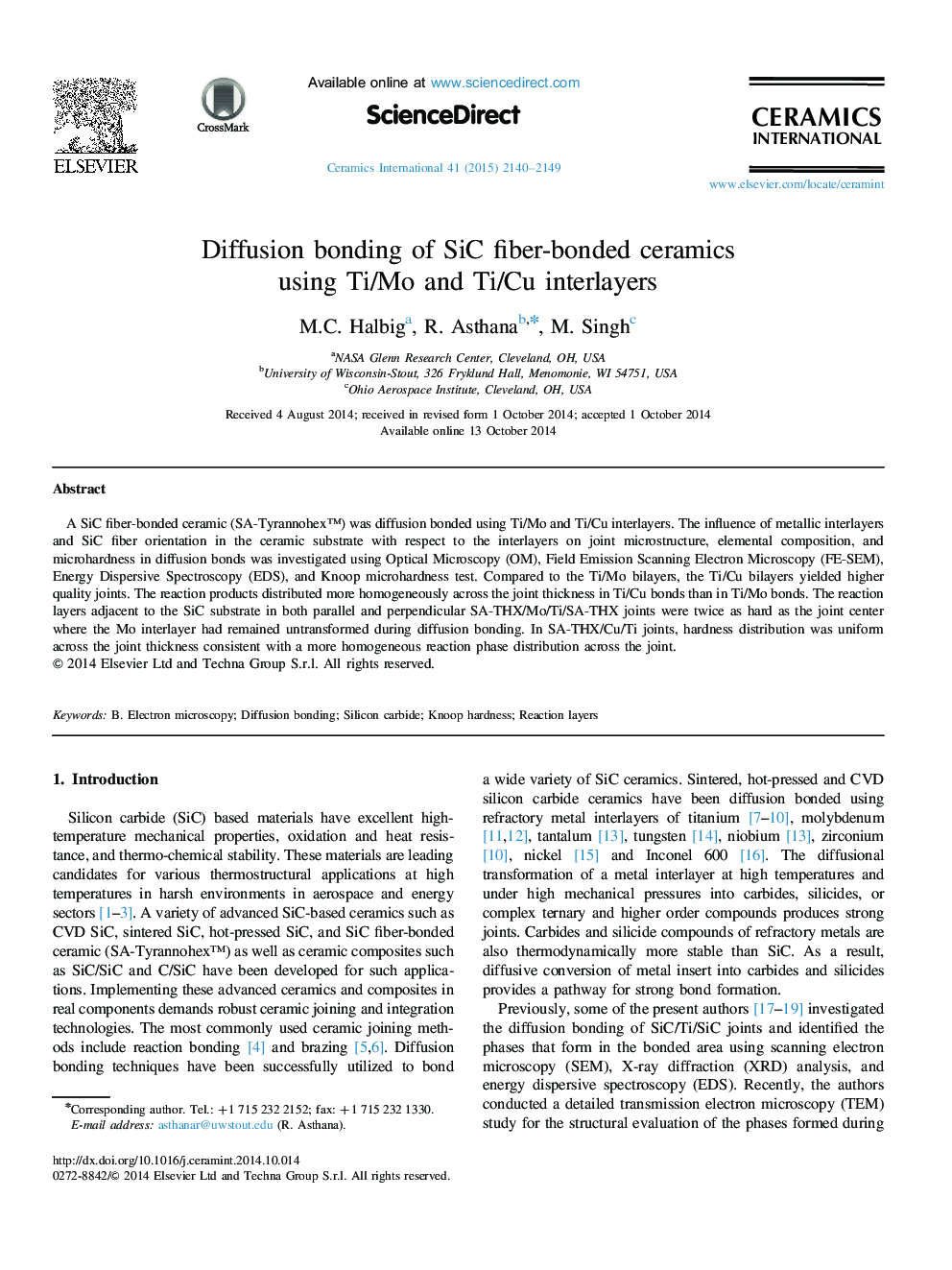| Article ID | Journal | Published Year | Pages | File Type |
|---|---|---|---|---|
| 1459228 | Ceramics International | 2015 | 10 Pages |
A SiC fiber-bonded ceramic (SA-Tyrannohex™) was diffusion bonded using Ti/Mo and Ti/Cu interlayers. The influence of metallic interlayers and SiC fiber orientation in the ceramic substrate with respect to the interlayers on joint microstructure, elemental composition, and microhardness in diffusion bonds was investigated using Optical Microscopy (OM), Field Emission Scanning Electron Microscopy (FE-SEM), Energy Dispersive Spectroscopy (EDS), and Knoop microhardness test. Compared to the Ti/Mo bilayers, the Ti/Cu bilayers yielded higher quality joints. The reaction products distributed more homogeneously across the joint thickness in Ti/Cu bonds than in Ti/Mo bonds. The reaction layers adjacent to the SiC substrate in both parallel and perpendicular SA-THX/Mo/Ti/SA-THX joints were twice as hard as the joint center where the Mo interlayer had remained untransformed during diffusion bonding. In SA-THX/Cu/Ti joints, hardness distribution was uniform across the joint thickness consistent with a more homogeneous reaction phase distribution across the joint.
